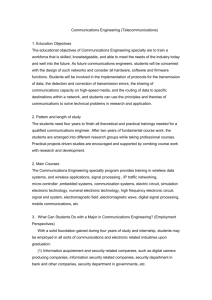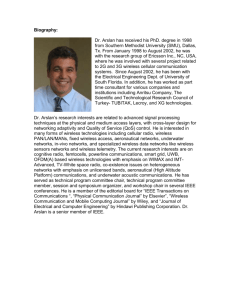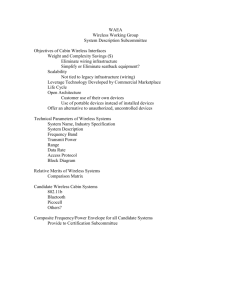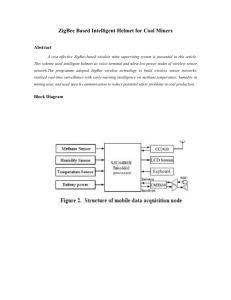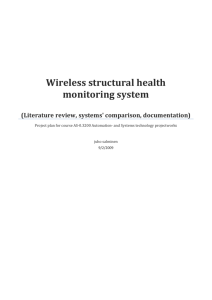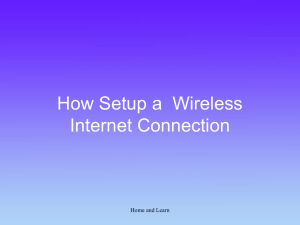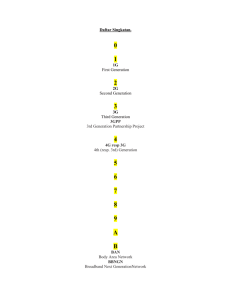Wireless Local Area Networks Are They Safe?
advertisement
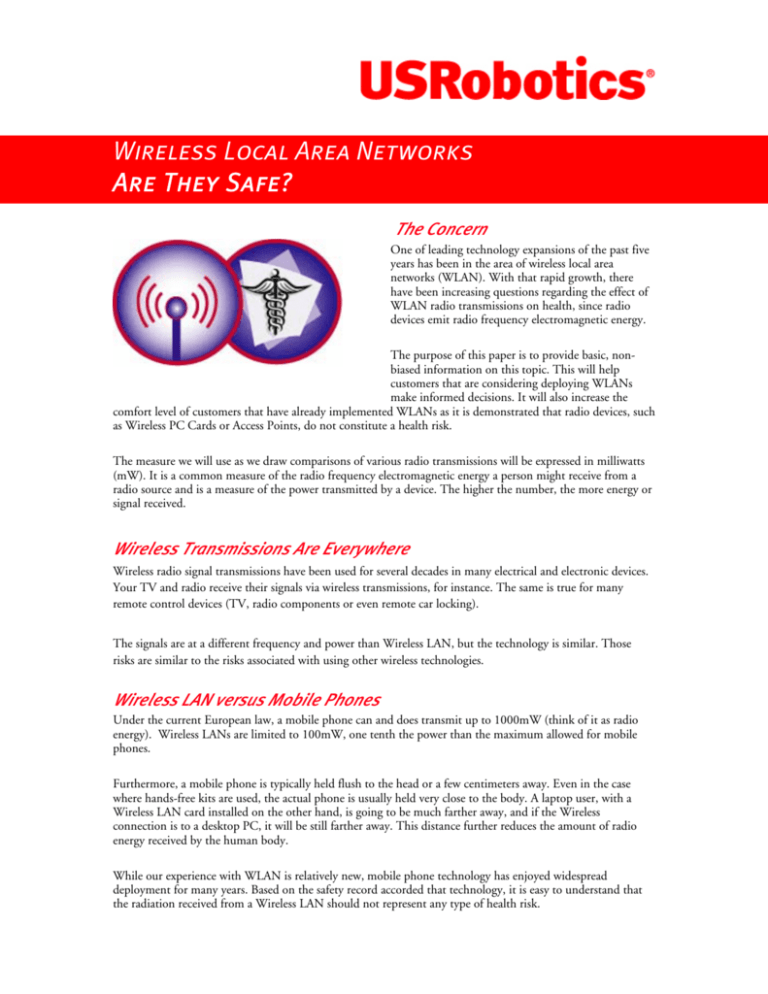
Wireless Local Area Networks Are They Safe? The Concern One of leading technology expansions of the past five years has been in the area of wireless local area networks (WLAN). With that rapid growth, there have been increasing questions regarding the effect of WLAN radio transmissions on health, since radio devices emit radio frequency electromagnetic energy. The purpose of this paper is to provide basic, nonbiased information on this topic. This will help customers that are considering deploying WLANs make informed decisions. It will also increase the comfort level of customers that have already implemented WLANs as it is demonstrated that radio devices, such as Wireless PC Cards or Access Points, do not constitute a health risk. The measure we will use as we draw comparisons of various radio transmissions will be expressed in milliwatts (mW). It is a common measure of the radio frequency electromagnetic energy a person might receive from a radio source and is a measure of the power transmitted by a device. The higher the number, the more energy or signal received. Wireless Transmissions Are Everywhere Wireless radio signal transmissions have been used for several decades in many electrical and electronic devices. Your TV and radio receive their signals via wireless transmissions, for instance. The same is true for many remote control devices (TV, radio components or even remote car locking). The signals are at a different frequency and power than Wireless LAN, but the technology is similar. Those risks are similar to the risks associated with using other wireless technologies. Wireless LAN versus Mobile Phones Under the current European law, a mobile phone can and does transmit up to 1000mW (think of it as radio energy). Wireless LANs are limited to 100mW, one tenth the power than the maximum allowed for mobile phones. Furthermore, a mobile phone is typically held flush to the head or a few centimeters away. Even in the case where hands-free kits are used, the actual phone is usually held very close to the body. A laptop user, with a Wireless LAN card installed on the other hand, is going to be much farther away, and if the Wireless connection is to a desktop PC, it will be still farther away. This distance further reduces the amount of radio energy received by the human body. While our experience with WLAN is relatively new, mobile phone technology has enjoyed widespread deployment for many years. Based on the safety record accorded that technology, it is easy to understand that the radiation received from a Wireless LAN should not represent any type of health risk. Radio Frequency Safety Standards The following organisations have independently issued recommendations for exposure to radio frequency electromagnetic energy. ¾ ¾ ¾ ¾ ¾ Coordinating Committee 28 of the Institute of Electrical and Electronics Engineers National Council on Radiation Protection and Measurements (NCRP) National Radiological - Protection Boards (NRPB) in the United Kingdom International Radiation Protection Association’s International Non-Ionizing Radiation Committee (IRPA/INIRC) (under World Health Organization sponsorship) IEEE/ANSI Standard (ANSI/IEEE C95.1-1992) In September of 1992, the IEEE Standard Board approved the IEEE Standards for Safety Levels with Respect to Human Exposure to Radio Frequency Electromagnetic Fields, 3 kHz to 300 GHz (the radio frequencies used for various technologies, for instance 802.11g WLAN uses the 2.4GHz band), IEEE C95.1-1991. In November 1992, the American National Standards Institute (ANSI) approved the IEEE C95.1-1991 standard. The following is stated in the IEEE standard: “No verified reports exist of injury to human beings who have been exposed to electromagnetic fields within the limits of frequency and [specific absorption rate] specified by previous ANSI standards, including ANSI C95.1-1982.” A View from the IEEE United States Activity Board and the Wireless LAN Association “Measurements have shown that routine exposure of users and other persons to low power portable and mobile transceivers and cellular telephones do not induce rates of [radio frequency] absorption that exceed any of the maximum permissible rates of energy absorption defined by these guidelines” [IEEE, ANSI] Therefore, based on present knowledge, the exposures from low-power transceivers are considered to be without risk for the users and the public. (Quoted from the IEEE USAB Entity Position Statement – Human Exposure to Radio frequency Fields from Portable and Mobile Telephones and other Communication Devices, December 2, 1992.) In addition, the Wireless LAN Association, in their document on Wireless LAN Health Risk, comes to the following conclusion: “The interpretation of over four decades of research in this area has led to a scientific consensus on the safety of exposure to radio frequency electromagnetic fields. This consensus is reflected in the recommendations and standards developed by expert committees such as NCRP Scientific Committee 53, IEEE Standards Coordinating Committee 28, IRPA/INIRC and NRPB. Manufacturers of Wireless Networking products design their products to operate within the guidelines of these standards and recommendations and, therefore, are considered safe.” www.usr.com
